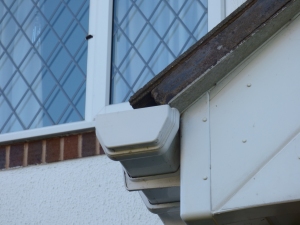Days Twenty-four & Twenty-five of Megan & Matt Go Wild!
Welcome to our joint-blogging series for the Wildlife Trusts’ 30 Days Wild Challenge – you can read more about the campaign and ourselves in our introduction page.
Matt (in western Scotland)
Yesterday was a quiet day. We hung around the cottage and took a break from dashing about.
But even here that meant a couple of otter sightings and our regular evening visit of pine marten.
Today, we took a trip to one of my favourite places – Mull. It feels like it’s on a different level. On Mull you’re on constantly alert for anything that moves, and we saw porpoises (my first ever), otters, Mull’s famous sea eagles, a peregrine falcon, wheatears, twite and oystercatchers.
We also took the boat to Iona, where I got one of my biggest ever birding ticks – the rare and extremely elusive corncrake. It makes a sound like a comb being run against a desk.
Not only did we hear this bird, we even spotted someone in a front garden of one of the handful of houses of this tiny island community.
But alongside the wildlife, one of the best elements of this trip has been being surrounded by such knowledgeable people whom I have learned so much from. Our current trip list of all the species of wildlife we have seen is 260. This is an incredible total, and I’m so impressed with the friends I’m with and the wildlife they can identify.
Megan (in western Scotland)
DAY 24
Today was a bit of a recovery day after the recent busyness. As someone who suffers a lot from exhaustion, this mid-holiday break was needed so that I don’t burn out before the end. I have spent far too much time at my laptop today, but I have been having fun. Whilst Matt was preparing the vegetables for the roast dinner, I played a bit of my music. The ‘Dear future husband’ song by Meghan Trainor started playing, and I thought about how my version would be quite different – after all, my future husband will have to accept me for who I am which includes dissecting owl pellets, keeping roadkill, smelling otter spraint and looking for insects.
Then I actually decided to write out my own version of the lyrics to the song! It was posted on my blog earlier today.
I then took it further, thinking that it would be quite amusing to make a video for my YouTube channel. I found the instrumental version of the song and edited some text onto photos and videos in time with the music. Here is the result, enjoy!
DAY 25
Following the calm of yesterday, we headed over to the Isle of Mull to try and see lots more wildlife. The plan worked – Harbour Porpoise (Phocoena phocoena) from the ferry and two Otters (Lutra lutra) gliding through still waters of a loch (during which my camera broke, nooooo!). On Iona, we were building our hopes up to hear the calling of male Corncrakes (Crex crex), and we did! It is one of the oddest bird noises I have ever heard, probably more weird than a booming bittern! Do go online and listen to it! Only about 15 minutes later and Matt spotted one as we were walking back to the ferry. What a lifer!
A small detour driving back to look for eagles – always worth detouring for! We had excellent views of an adult White-tailed Sea Eagle (Haliaeetus albicilla), and could also glimpse a youngster through the branches of a tree.






















































































